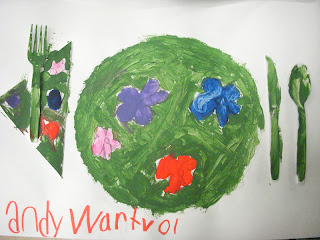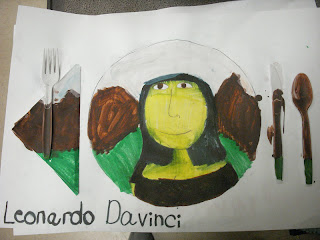http://artasticartists.blogspot.com/2011/03/wolf-kahn-analogus-color-family-pastel.html
I have another previous post about this, but it's much easier than you think! I tell my kinders to write their name on the back of a big 12x18 piece of drawing paper at their tables. I count them down to encourage them to focus on getting their name on the back. Raise your hand if you're ready for directions! Everyone's hand is in the air, next step is to pick out 6 colors. Your magic number is 6. Pick out 6 chalk pastel from your container. I'll count ya down, you pick out 6 and have them ready. I start from 15. 15, raise your hand if you have your pastels, 14, have them out and read, 13 pick out your colors, 12, 11, 10......and I continue to count down until all hands are in the air.


I have then on the white board where everyone can see, a piece of 12x18 white paper taped. I have my 6 pastels ready. Okay, pick out your first color and hold it in the air. 5, 4, have it ready, 3, 2, and 1: Watch what I do: (I demonstrate how there's 2 ways of using the chalk pastel. The tip and the side. I tell them we're going to use the side of the pastel for a lot of the project. I show them and count them down from 15. 15, move side to side, 14, side to side, 13 side to side, ........ After we get a new color for each section, it's time for the fun part! Now it's time to smooth side to side, use the tips of your fingers on 1 hand. 15 smooth side to side, 14, smooth side to side, 13, side to side, moving up slowly, smoothing side to side.......now we're going to get ready with a new color and then hold it in the air in 5, 4, 3, 2, and 1. This time using the tip watch to see what I do to make the trunks: *do the downward motion strokes for trunks* Fast! Fast!Fast! Say it out loud! *kids fast, fast, fast* as they make the marks on their paper. Okay done in 5, 4, 3, 2, hold your color in the air. Okay, get your last color and hold it in the air in 5, 4, 3, 2, 1, watch. Using the side *demonstrate* we're going to make the tops of the trees to finish our Wolf Kahn pastel. Watch how I do it to fill the top area. *Demonstrate* Finish up from 15, 14, 13....... put your pastel down and your hand in the air, and the other in the, wave'em around like you just don't care, heeeeey hooooo.( I like to make it fun to listen:) ) I will call tables to wash hands, then dry and the table captain will wash your table and dry. Put your drawing on your chair and point to places where your table captain needs to wash and dry.
Try this with your kinders! It works great! (more pics to come!)































